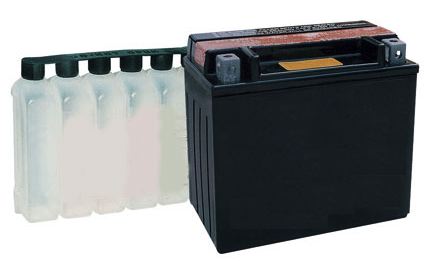How does a motorcycle battery produce electricity?
To be honest, this part isn’t very interesting!
Motorcycle batteries are made up of individual compartments called ‘cells’ which contain lead plates that are charged positive on 1 side and negative on the other side.
Each cell produces just over 2 volts (around 2.2 volts) so 6 volt batteries have 3 cells and 12 volt batteries have 6 cells.
You can usually tell how many cells (and the voltage) a battery has by the number of holes in the top of the battery.
Electricity is produced when the electrolyte (battery acid, a mixture of sulphuric acid and distilled water) in the battery reacts with the lead plates in the cells. The sulphuric acid in the electrolyte reacts with the lead in the lead plates to produce lead sulphate, as this reaction occurs ‘free electrons’ are deposited on to the positive lead plates.
These electrons cling to the plates until a ‘load’ is placed on the battery (for example when the ignition is turned on).
When a load is placed on the battery, the electrons move form the positive plates to the negative plates and this movement produces an electrical current.

Disclaimers:
The information provided on this page is ‘to the best of our knowledge’ and should not be taken as 100% accurate!!
To keep this page as a free resource for people to use, there are affiliate links (mainly Amazon) throughout the article. These affiliate links help maintain the cost of running this blog (basically, if you visit Amazon through one of the links and buy something, we make a few pence!).

Leave a Reply